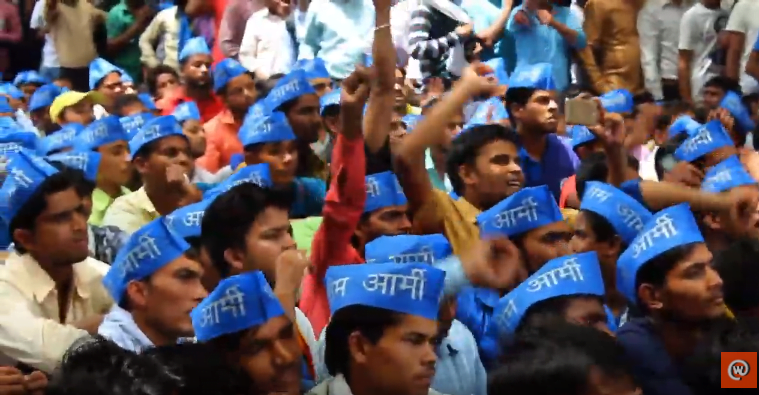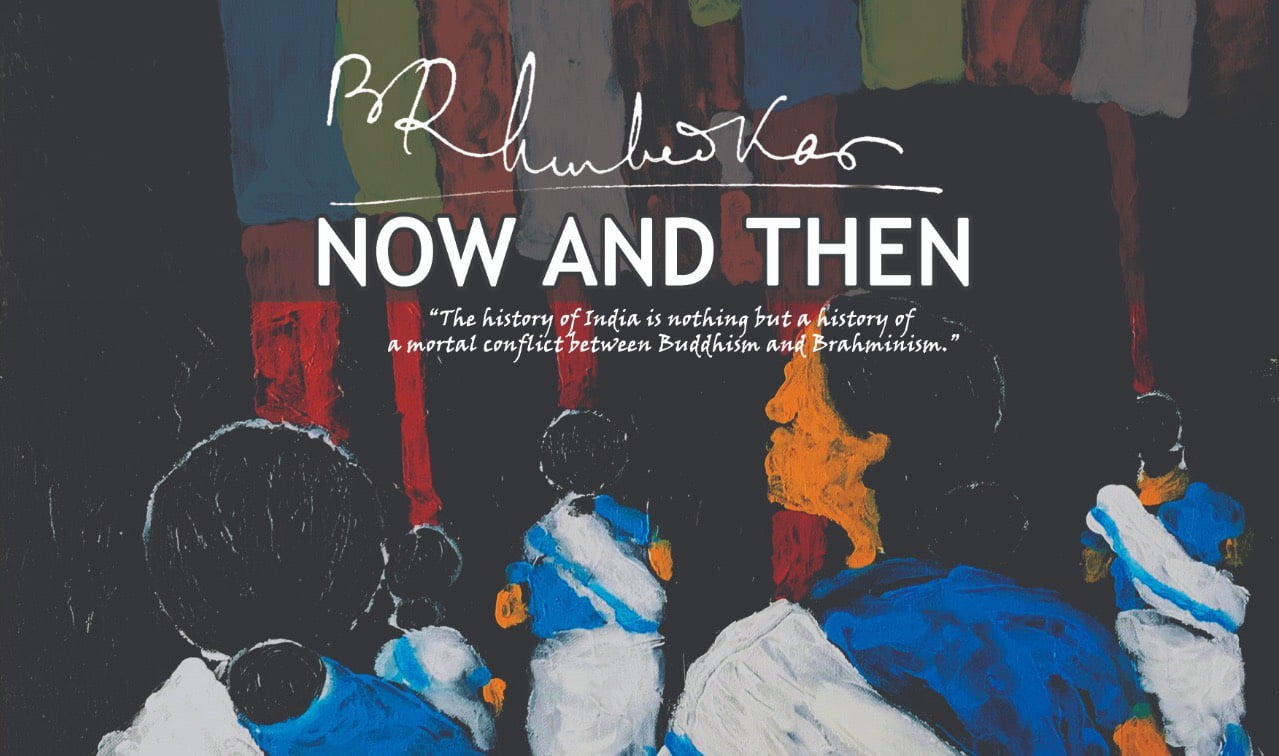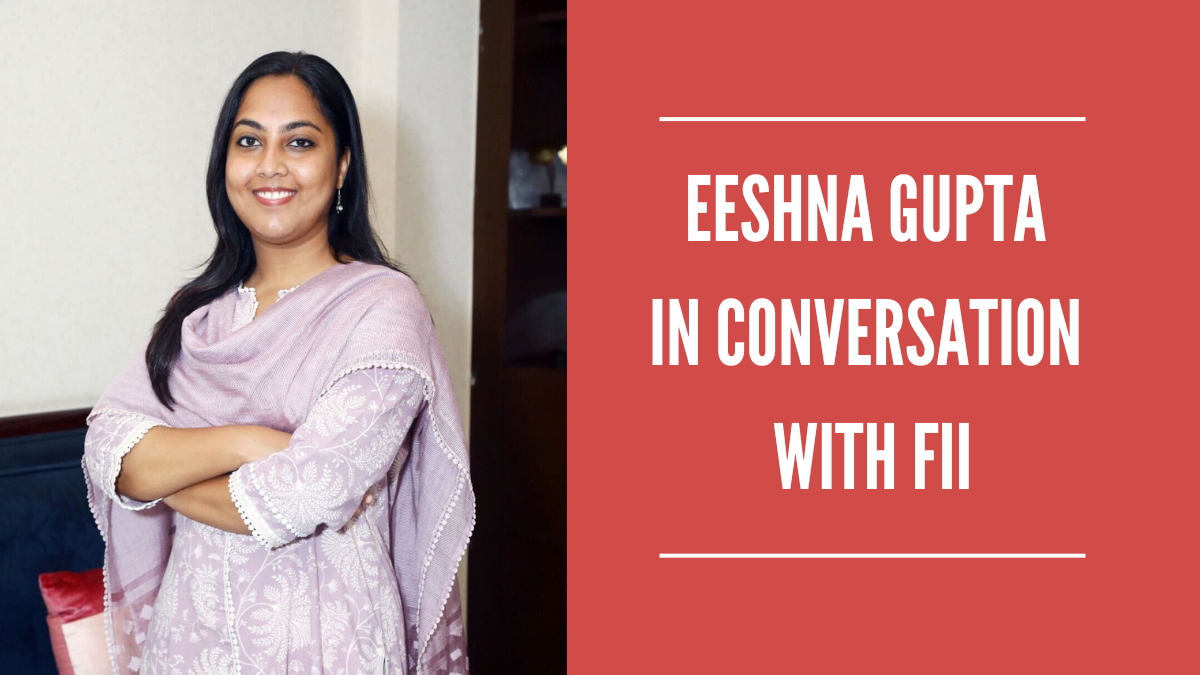What does Ambedkar mean in our contemporary times? There is no one answer here, but a multitude of stories, wrapped up in assertion, politics and resistance. For scholar and filmmaker Jyoti Nisha, this is a story sprawled over 8 different locations and it has taken her over 2 years, and a successful crowdfunding campaign for it to come together in the form of her feature-length documentary B.R. Ambedkar – Now and Then. The documentary film “explores Dr. Babasaheb Ambedkar’s life symbolically and politically, and delves into representation and assertion of Bahujan politics in today’s time.” It captures the conflicted zones of Bahujan communities in India, and most importantly, is rooted firmly within a Bahujan-feminist perspective. The film is currently in post-production.
Here is an excerpt from the interview with the filmmaker, Jyoti Nisha.
Anagha Smrithi: As a feminist and as an artist, what are the most important things you have learnt from your journey of understanding Ambedkar?
Jyoti Nisha: My journey with Babasaheb has always been an intuitive one. I knew of Babasaheb from a young age, my father was in the movement. As a child I grew up around rallies, dance and posters. When you come from an Ambedkarite family, it teaches you to look at the world rationally. My family always insisted on education, and I definitely realize the value of that now. When my friends were getting married, I went to FTII. And I didn’t stop studying after that.
So the learning started right from the beginning. My brother and I always spoke about politics. I was raised in a scientific way, I spoke openly about menstruation. There wasn’t any strict control of sexuality, so I didn’t grow up censoring myself. I had freedom, and that’s why I am this way today- I’m direct and straight to the point.
I see everything in the world as a grand story. Some stories make sense, some are absurd. In India, you can’t escape Hinduism and all its myths, tales, gods and goddesses. My friends were Hindus. They went to temples and did rituals, while I spent time with them for sweets.
I didn’t understand their fervent praying to these gods. Coming from an Ambedkarite Buddhist family, we didn’t do this. We prayed to Buddha, celebrated Ambedkar and Jyotiba; and didn’t ask anything of them in return. At least I didn’t. We believed in people who were alive, who had history, strong characters and great journeys. Their stories seemed believable.
It was later during my screenplay writing days at FTII, that I recognized these Hindu myths as metaphors and symbols. For the first time I realized that these were indeed stories. And I was relieved. It all started making sense.
My journey about Babasaheb isn’t just about me. It’s about ethics, about morality. It’s about truth.

AS: What can be the role of the media in the contemporary Ambedkarite movement? Why have you chosen film as your medium?
JN: Caste is a very big problem, I’ll begin from there. You have to see representation of people in the media. When I saw how anti-progressive the media can be, it really defeated me. They don’t represent the people who need it. And as a journalist, if you don’t care about that representation, what’s the point? You’ve failed. Not just a journalist, but as a citizen, as a human, as a person who thinks.
With the media, it’s all a power structure. First they communalise everything, make it about the Hindu-Muslim divide. And what does that do? Further hides the realities of caste. And not just caste- how many women do you see in the media? What kind of women? For a country supposed to be diverse and secular, our media is controlled by one kind of people who take everyone else’s space.
And even when the media does talk about caste, they exoticize it. They talk about marginalised communities the same the way that people from the West portray Third World countries. We need to move beyond this. We have to be able to connect- to learn and unlearn.
This is why we need to use the media, use film. It’s about representation. We have to make sacrifices and assert ourselves to make space for people. My film is about this, it’s completely ideologically driven.
AS: What is it like making a film that is closely tied to your lived experience?
JN: Cinema is a powerful medium, but it’s lived experience that connects people to it. When I saw Patwardhan’s Jai Bhim Comrade, I recognized the space he was working in, but I couldn’t connect to the gaze in the film. We really need to tell our own stories. Lived experience is an invisible thread tied across people- of discrimination, of assertion, of wanting to say that we belong here. Stories need to be told from that point. And we will tell those stories.
When we were in Gujarat, we interviewed a woman who is a manual scavenger. And you almost can’t enter that settlement, the stench of shit, the dirt, it’s like an assault. I felt like puking. But wrapped our faces and shot. This is their job, this is where they live.
We ignore these people, most of them are drunk, because you can’t do this kind of work in your regular senses. And when they die, their bodies… you can’t look at those bodies. It’s the death of a human being, of humanity. And it’s because of society. You have NGOs workers and social workers, but no one is doing enough.
Lived experience is an invisible thread tied across people – of discrimination, of assertion, of wanting to say that we belong here. Stories need to be told from that point. And we will tell those stories.
These instances were painful. And I could connect to it. The people I interviewed had lost people they knew, I had lost people I knew. The lifespan of a Bahujan woman is barely over 50 years. And this is systematic, we are being killed slowly. By the government, by everyone. Everyone is a part of this. So yes, shooting this film… It has filled my heart, but it has choked us too.
AS: Savarna filmmakers tend to focus a lot on victimization and oppression when documenting stories about marginalization. Unlike them, in your trailer, there is a very clear sense of resistance and celebration that comes through. Can you talk about this?
JN: I’m focusing on resistance because that’s what is happening! I can see it in front of me. Since 2014 there’s been a wave of resistance. Vemula’s death triggered something across the country and even in my mind. That was the same time I observed attacks on artistic freedom and expression. I felt like I was being told what to think, and I had to break out of it. It was personal.
Resistance is everywhere. I’ve been to corners of the country and found people doing PhDs. Women with two kids doing double Masters. That’s the spirit of resistance. Knowledge production, cinema, stories, discourse; all of it comes from caste oppression. It’s been fed to a generation. And how do you break it? It’s difficult, but people are trying. People are fighting.
I knew there was resistance that I had to document. We can’t let this story get appropriated, it’s such a great story- there is mobilization, youth, drama, revolution, art, a conversation about gender and sexuality. So I went out there to capture it.
It’s such a great story – there is mobilization, youth, drama, revolution, art, a conversation about gender and sexuality. So I went out there to capture it.
And I saw how serious it is. There is discrimination, death and starvation. I went to Una to interview a family – they had a hut, some utensils and a photo of Ambedkar. In some ways I’m just a medium, the story was already there. I could give them a mic, so I gave it to them. And then it becomes about resistance.

AS: The content of your film is different, since you deliberately use an Ambedkar-Feminist lens. But other than the content, is there also a different kind of aesthetics? Can there be an Ambedkarite-Feminist aesthetics for film or documentary?
JN: I don’t know if it’s an aesthetic. With documentary, you capture what is already there. The color scheme automatically became blue and white. The soundscape was filled with Jai Bhim. Amedkarite & Buddhist symbols naturally came together. It’s there, it’s true, it’s powerful. And that comes through in every frame.
My cameraperson Pooja has been so supportive, but she hasn’t seen all of this. So before shooting, I showed her Jai Bhim Comrade. I told her we would work in a similar space, but not in this way. So while shooting, our space was left untouched. We wanted it as is- the color scheme, the Jai Bhim flags, the volumes of Ambedkar, the statues of Buddha. There were no aesthetics we needed to add. We shot it as was, why should we change anything?
Also read: Why Ambedkar Matters To The Women’s Rights Movement
A woman who saw my film said ‘There’s so many women in your frames!’ And I said- ‘Of course, look who is making it!’ And it’s true, there are so many women. Sometimes I think the gaze of a woman is different. And perhaps it should be.
AS: Your crowdfunding campaign was successful. Congratulations! Is crowdfunding the best way forward for artists with an Ambedkarite-Feminist vision? Do you think it can challenge the caste/class/gender privilege and networks in the media world?
JN: Yes of course! There are other structures for funding, but they are designed to make you stay there. To get funds from government organisations, you have to subscribe to their ideology of nationalism. And I don’t fall into that bracket.
I’m working on something which the media has ignored for years. Why will the state fund it? A politician offered me 8 lakhs to produce my film, but he had his own interests. And I couldn’t agree to that, it’s my film. I can’t compromise on the things I believe in; either as a person or as an artist.
I know what producers want, I know the drill. But my narrative isn’t palatable, which is why I connected only with people from my community. And you wouldn’t believe how many people have helped me. People have given me their entire salaries- from 5000 rupees to 2 lakhs!
I shot in eight different places, someone always connected me to someone else. People were kind, people helped me. Imagine- two young women shooting in Gujarat, going to Una with people we didn’t know. And I never felt unsafe.
Some people in the movement did question my crowdfunding campaign, mainly men. Men need to understand that they can’t make a movement alone. There are women who want to do things differently. Sometimes I think we’re becoming regressive. We need is more humanity, we need to give space to women The criticism turned me off, but it made me work harder. There is misogyny within the movement, but there also people who are encouraging and that kept me going.
At the end of the day, there are people who identify with Babasaheb and who will help out anyone who is part of the movement.
I heard about crowdfunding on Wishberry through Vivek Rangachari from Dhar Motion Pictures. He saw potential in my project and connected me to the owner of Wishberry, Priyanka Agarwal. And I’m a risk taker, I felt like I could do it! I was on my own, I didn’t have resources, but I had the conviction. At the end of the day, there are people who identify with Babasaheb and who will help out anyone who is part of the movement. And it worked.
AS: How can allies support aspiring Ambedkarite artists and filmmakers? What can allyship look like?
JN: As human beings, we can connect with each other. I don’t ask everyone their class and caste location, but I do find that I can still connect with many of them. We need these connections, and that’s what I look for in allyship. And of course, I think everyone should read Babasaheb. Babasaheb is like a medium, if you go through him, you change. It wakes you up, it does something to you. And if you don’t then there’s something wrong with you.
There’s a book by Joseph Campbell, A Hero with A 1000 Faces. The whole book is about a call to adventure. Being part of the movement is like that. You have to say yes to adventure. So I guess the same goes for allies. If you really care, then that has to manifest in action, in the things you do. There is energy in action.
Coming back to my film, I was ready to do something I hadn’t done before, and that’s important, whether you are in the movement, or an ally. And we have to bring happiness into the narrative too. I’m so happy when someone from our community succeeds at something, I want to share that happiness with everyone. We need to learn how to be happy for each other.
Also read: Meet Priyadharsini: Filmmaker And Founder Of The Blue Club
FII thanks Jyoti for taking out time to do the interview. You can follow Jyoti Nisha Facebook and get updates about the film here. The film will initially be screened in film festivals, and may have a cinematic release later on.
Featured Image Source: Two Circles
About the author(s)
Anagha is pursuing her MA in Media & Culture from TISS Mumbai.





Good Job Jyoti.
Realy mam u r doing great work on Ambedkarite movements .Its ways go to Ambedkar yug ji bhim